-

Sep
28
Interpretive Summary: Third party resolution needed for US and Mexico corn dispute
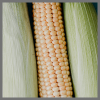
United States Trade Representative Katherine Tai announced that the United States is seeking a dispute settlement panel the United States-Mexico-Canada Agreement (USMCA) regarding Mexico’s biotechnology corn measures. The United States is in an ongoing disagreement with Mexico over the February 2023 decree, banning the use of biotech corn in tortillas or dough, and the instruction to Mexican government agencies to gradually phase out the use of biotech corn in all products for human consumption and for animal feed.
Read more
-

Sep
28
Interpretive Summary: USDA awards small business owners and farmers

The United States Department of Agriculture (USDA) has announced over $265 million in awards to help small business owners, farmers, and ranchers lower their energy costs, create income, and expand operations. The awards are provided through President Biden’s Inflation Reduction Act and the Rural Energy for America Program (REAP), as part of the Investing in America Agenda.
Read more
-

Sep
28
Interpretive Summary: USDA gives 65 million dollars in conservation grants

The United States Department of Agriculture (USDA) has announced $65 million through the Conservation Innovation Grant (CIG) Program. The funds will support two programs, designed to provide new tools, approaches, practices, and technologies to further natural resource conservation on private lands.
Read more
-

Sep
21
Interpretive Summary: Predicting dry matter intake in beef cattle
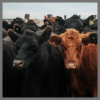
In animal agriculture, passive monitoring technology has the potential to lead to needed innovations as we look for solutions to make global food production more resilient. Here, we use passive intake systems to measure daily weight, water intake, and climatic variables to accurately predict dry matter intake.
Read more
-

Sep
21
Interpretive Summary: A Clinical Trial on the Welfare Effects of Administering Meloxicam to 10 to 21 Day Dairy Calves Following Caustic Paste Disbudding
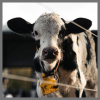
Caustic paste disbudding (CPD) is a widely used practice in the cattle industry, yet there is a shortage of literature on the effects of meloxicam on calves aged 10 to 21 d who have undergone this procedure. In this clinical trial, we conducted a comparative analysis of the pain-related behavioral, physiological, and hematological performance of calves that were administered with either lidocaine plus normal saline (n = 15) or lidocaine plus meloxicam (n = 15) before undergoing disbudding operations.
Read more
-

Sep
21
Interpretive Summary: Postpartum meloxicam administration to sows but not split-suckling increases piglet growth and reduces clinical incidence of disease in suckling piglets
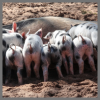
Suckling pigs should receive ≥200 g of colostrum (the first secretion of the mammary gland after giving birth) within the first 24 h of life. This is challenging to achieve as the number of piglets born alive has increased over the last decade, but the sow’s ability to produce colostrum has not increased.
Read more
-

Sep
21
Interpretive Summary: Short communication: evaluation of an endotoxin challenge and intraruminal bacterial inoculation model to induce liver abscesses in Holstein steers
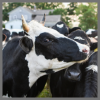
Liver abscesses in feedlot cattle can cause a decrease in feed intake, average daily gain, feed efficiency, and hot carcass weight. At harvest, liver abscesses result in liver condemnations, carcass trimming, and a potential decrease in quality grade, with an estimated economic cost to packers of $41.6 million annually.
Read more
-

Sep
21
Interpretive Summary: Diet production and utilization of corn fermented protein compared to traditional yeast in healthy adult cats

The inclusion of yeast in pet food can provide health benefits and increase palatability. Corn-fermented protein is a co-product from ethanol production which contains approximately 20% to 25% yeast.
Read more
-

Sep
21
Interpretive Summary: Standardized amino acid digestibility and protein quality in extruded canine diets containing hydrolyzed protein using a precision-fed rooster assay

Hydrolyzed protein has been more commonly used in the pet food industry recently to increase digestibility, decrease allergenic responses, and for other health benefits (such as anti-inflammation and anti-oxidation) in companion animals. The study was designed to determine the protein quality of two protein hydrolysates for incorporating into dry dog foods.
Read more
-

Sep
14
Interpretive Summary: The impact of protein source and grain inclusion on digestibility, fecal metabolites, and fecal microbiome in adult canines

A recent topic of debate in pet food is whether grain or pulse ingredients and varying amounts of animal-based protein compared to plant proteins are better for pets’ health. Thus, the need to examine ingredients used in pet food is important.
Read more
-

Sep
14
Interpretive Summary: Short-term changes in dietary fat levels and starch sources affect weight management, glucose and lipid metabolism, and gut microbiota in adult cats

Obesity is a common problem in domestic cats. Fat in dry-extruded pet food may be a risk factor for feline obesity. Additionally, the utilization of various carbohydrates in domestic cats has garnered attention. This study explored the impact of varying fat levels and starch sources on body weight, glucose metabolism, and gut microbiota composition in healthy adult cats.
Read more
-

Sep
14
Interpretive Summary: Boundaries for genotype, phenotype, and pedigree truncation in genomic evaluations in pigs
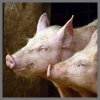
Recording data for long years is common in animal breeding and genetics. However, the larger the data, the higher the computing cost of the analysis, especially with genomic information. This study aimed to investigate the impact of removing data, namely, genotypes, phenotypes, and pedigree, on the computing performance and prediction ability of genomic breeding values.
Read more
-

Sep
14
Interpretive Summary: Variance component estimates for growth traits in beef cattle using selected variants from imputed low-pass sequence data
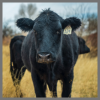
Animals from a crossbred beef cattle population were sequenced at low depth (i.e., 0.5×) and different subsets of selected imputed variants were investigated relative to their ability to explain variation in birth weight (BWT) and post-weaning gain (PWG).
Read more
-

Sep
14
Interpretive Summary: High-grain diet feeding alters ileal microbiota and disrupts bile acid metabolism in lactating dairy cows
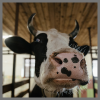
Bile acids plays an important role in regulating lipids metabolism in animals and human. Dairy cows fed high-grain (HG) diet generally suffer abnormal lipids metabolism. However, if there is a relationship between the bile acids metabolism and abnormal lipids metabolism in dairy cows fed HG diet is unclear.
Read more
-

Sep
14
Infographic: In vitro gametogenesis from embryonic stem cells in livestock species: recent advances, opportunities, and challenges to overcome
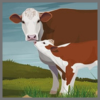
In vitro gametogenesis (IVG) is the ability to mimic the reproductive cycle in a dish and presents a paradigm shift for producing viable gametes and healthy offspring in animal agriculture.
Read more
-

Sep
07
Interpretive Summary: The real place of livestock in GHG emissions and their control for climate change

Climate change presents multiple challenges to the livestock industry including the need to examine animal and environmental management practices to enhance efficiency, reduce greenhouse gas emissions from animals and manure, reduce water and other resource use, and pressure to eliminate meat and livestock products from diets.
Read more
-

Sep
07
Interpretive Summary: Metagenome strain deconvolution and abundance estimation enabled by low-error long-read DNA sequence

The rumen microbiome is essential to animal nutrition and health, but current genetics resources to study this community are incomplete.
Read more
-

Sep
07
Interpretive Summary: Update of nutritional requirements of goats for growth and pregnancy in hot environments

Goats serve as a valuable source of income in agriculture, supplying both milk and meat. Their adaptability to diverse environments makes them a viable choice among rural households for livestock, especially in harsh environments. Research has been dedicated to refining goat feeding systems and determining their nutritional requirements.
Read more
-

Sep
07
Interpretive Summary: Livestock-wildlife conflicts: A struggle for land use and conservation in the U.S. Mountain West

Livestock production in the Intermountain West of the United States (U.S.) largely depends on grazing access to U.S. government-owned “public lands”, which also provide habitat for many of North American’s iconic wildlife species.
Read more
-

Sep
07
Interpretive Summary: Genetic selection for dairy calf disease resistance traits: opportunities and challenges
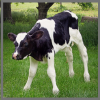
Genetic selection is a viable option to help improve calf health. Producer recorded calf disease data comprised of 69,695 Holstein calf disease records for respiratory problems (RESP) and diarrhea (DIAR). Across analyses, heritability estimates for RESP and DIAR ranged from 0.02 to 0.07, indicating the potential for selection.
Read more
 SepInterpretive Summary: Third party resolution needed for US and Mexico corn dispute
SepInterpretive Summary: Third party resolution needed for US and Mexico corn dispute United States Trade Representative Katherine Tai announced that the United States is seeking a dispute settlement panel the United States-Mexico-Canada Agreement (USMCA) regarding Mexico’s biotechnology corn measures. The United States is in an ongoing disagreement with Mexico over the February 2023 decree, banning the use of biotech corn in tortillas or dough, and the instruction to Mexican government agencies to gradually phase out the use of biotech corn in all products for human consumption and for animal feed.
United States Trade Representative Katherine Tai announced that the United States is seeking a dispute settlement panel the United States-Mexico-Canada Agreement (USMCA) regarding Mexico’s biotechnology corn measures. The United States is in an ongoing disagreement with Mexico over the February 2023 decree, banning the use of biotech corn in tortillas or dough, and the instruction to Mexican government agencies to gradually phase out the use of biotech corn in all products for human consumption and for animal feed. SepInterpretive Summary: USDA awards small business owners and farmers
SepInterpretive Summary: USDA awards small business owners and farmers The United States Department of Agriculture (USDA) has announced over $265 million in awards to help small business owners, farmers, and ranchers lower their energy costs, create income, and expand operations. The awards are provided through President Biden’s Inflation Reduction Act and the Rural Energy for America Program (REAP), as part of the Investing in America Agenda.
The United States Department of Agriculture (USDA) has announced over $265 million in awards to help small business owners, farmers, and ranchers lower their energy costs, create income, and expand operations. The awards are provided through President Biden’s Inflation Reduction Act and the Rural Energy for America Program (REAP), as part of the Investing in America Agenda. SepInterpretive Summary: USDA gives 65 million dollars in conservation grants
SepInterpretive Summary: USDA gives 65 million dollars in conservation grants The United States Department of Agriculture (USDA) has announced $65 million through the Conservation Innovation Grant (CIG) Program. The funds will support two programs, designed to provide new tools, approaches, practices, and technologies to further natural resource conservation on private lands.
The United States Department of Agriculture (USDA) has announced $65 million through the Conservation Innovation Grant (CIG) Program. The funds will support two programs, designed to provide new tools, approaches, practices, and technologies to further natural resource conservation on private lands. SepInterpretive Summary: Predicting dry matter intake in beef cattle
SepInterpretive Summary: Predicting dry matter intake in beef cattle In animal agriculture, passive monitoring technology has the potential to lead to needed innovations as we look for solutions to make global food production more resilient. Here, we use passive intake systems to measure daily weight, water intake, and climatic variables to accurately predict dry matter intake.
In animal agriculture, passive monitoring technology has the potential to lead to needed innovations as we look for solutions to make global food production more resilient. Here, we use passive intake systems to measure daily weight, water intake, and climatic variables to accurately predict dry matter intake. SepInterpretive Summary: A Clinical Trial on the Welfare Effects of Administering Meloxicam to 10 to 21 Day Dairy Calves Following Caustic Paste Disbudding
SepInterpretive Summary: A Clinical Trial on the Welfare Effects of Administering Meloxicam to 10 to 21 Day Dairy Calves Following Caustic Paste Disbudding Caustic paste disbudding (CPD) is a widely used practice in the cattle industry, yet there is a shortage of literature on the effects of meloxicam on calves aged 10 to 21 d who have undergone this procedure. In this clinical trial, we conducted a comparative analysis of the pain-related behavioral, physiological, and hematological performance of calves that were administered with either lidocaine plus normal saline (n = 15) or lidocaine plus meloxicam (n = 15) before undergoing disbudding operations.
Caustic paste disbudding (CPD) is a widely used practice in the cattle industry, yet there is a shortage of literature on the effects of meloxicam on calves aged 10 to 21 d who have undergone this procedure. In this clinical trial, we conducted a comparative analysis of the pain-related behavioral, physiological, and hematological performance of calves that were administered with either lidocaine plus normal saline (n = 15) or lidocaine plus meloxicam (n = 15) before undergoing disbudding operations. SepInterpretive Summary: Postpartum meloxicam administration to sows but not split-suckling increases piglet growth and reduces clinical incidence of disease in suckling piglets
SepInterpretive Summary: Postpartum meloxicam administration to sows but not split-suckling increases piglet growth and reduces clinical incidence of disease in suckling piglets Suckling pigs should receive ≥200 g of colostrum (the first secretion of the mammary gland after giving birth) within the first 24 h of life. This is challenging to achieve as the number of piglets born alive has increased over the last decade, but the sow’s ability to produce colostrum has not increased.
Suckling pigs should receive ≥200 g of colostrum (the first secretion of the mammary gland after giving birth) within the first 24 h of life. This is challenging to achieve as the number of piglets born alive has increased over the last decade, but the sow’s ability to produce colostrum has not increased. SepInterpretive Summary: Short communication: evaluation of an endotoxin challenge and intraruminal bacterial inoculation model to induce liver abscesses in Holstein steers
SepInterpretive Summary: Short communication: evaluation of an endotoxin challenge and intraruminal bacterial inoculation model to induce liver abscesses in Holstein steers Liver abscesses in feedlot cattle can cause a decrease in feed intake, average daily gain, feed efficiency, and hot carcass weight. At harvest, liver abscesses result in liver condemnations, carcass trimming, and a potential decrease in quality grade, with an estimated economic cost to packers of $41.6 million annually.
Liver abscesses in feedlot cattle can cause a decrease in feed intake, average daily gain, feed efficiency, and hot carcass weight. At harvest, liver abscesses result in liver condemnations, carcass trimming, and a potential decrease in quality grade, with an estimated economic cost to packers of $41.6 million annually. SepInterpretive Summary: Diet production and utilization of corn fermented protein compared to traditional yeast in healthy adult cats
SepInterpretive Summary: Diet production and utilization of corn fermented protein compared to traditional yeast in healthy adult cats The inclusion of yeast in pet food can provide health benefits and increase palatability. Corn-fermented protein is a co-product from ethanol production which contains approximately 20% to 25% yeast.
The inclusion of yeast in pet food can provide health benefits and increase palatability. Corn-fermented protein is a co-product from ethanol production which contains approximately 20% to 25% yeast. SepInterpretive Summary: Standardized amino acid digestibility and protein quality in extruded canine diets containing hydrolyzed protein using a precision-fed rooster assay
SepInterpretive Summary: Standardized amino acid digestibility and protein quality in extruded canine diets containing hydrolyzed protein using a precision-fed rooster assay Hydrolyzed protein has been more commonly used in the pet food industry recently to increase digestibility, decrease allergenic responses, and for other health benefits (such as anti-inflammation and anti-oxidation) in companion animals. The study was designed to determine the protein quality of two protein hydrolysates for incorporating into dry dog foods.
Hydrolyzed protein has been more commonly used in the pet food industry recently to increase digestibility, decrease allergenic responses, and for other health benefits (such as anti-inflammation and anti-oxidation) in companion animals. The study was designed to determine the protein quality of two protein hydrolysates for incorporating into dry dog foods. SepInterpretive Summary: The impact of protein source and grain inclusion on digestibility, fecal metabolites, and fecal microbiome in adult canines
SepInterpretive Summary: The impact of protein source and grain inclusion on digestibility, fecal metabolites, and fecal microbiome in adult canines A recent topic of debate in pet food is whether grain or pulse ingredients and varying amounts of animal-based protein compared to plant proteins are better for pets’ health. Thus, the need to examine ingredients used in pet food is important.
A recent topic of debate in pet food is whether grain or pulse ingredients and varying amounts of animal-based protein compared to plant proteins are better for pets’ health. Thus, the need to examine ingredients used in pet food is important. SepInterpretive Summary: Short-term changes in dietary fat levels and starch sources affect weight management, glucose and lipid metabolism, and gut microbiota in adult cats
SepInterpretive Summary: Short-term changes in dietary fat levels and starch sources affect weight management, glucose and lipid metabolism, and gut microbiota in adult cats Obesity is a common problem in domestic cats. Fat in dry-extruded pet food may be a risk factor for feline obesity. Additionally, the utilization of various carbohydrates in domestic cats has garnered attention. This study explored the impact of varying fat levels and starch sources on body weight, glucose metabolism, and gut microbiota composition in healthy adult cats.
Obesity is a common problem in domestic cats. Fat in dry-extruded pet food may be a risk factor for feline obesity. Additionally, the utilization of various carbohydrates in domestic cats has garnered attention. This study explored the impact of varying fat levels and starch sources on body weight, glucose metabolism, and gut microbiota composition in healthy adult cats. SepInterpretive Summary: Boundaries for genotype, phenotype, and pedigree truncation in genomic evaluations in pigs
SepInterpretive Summary: Boundaries for genotype, phenotype, and pedigree truncation in genomic evaluations in pigs Recording data for long years is common in animal breeding and genetics. However, the larger the data, the higher the computing cost of the analysis, especially with genomic information. This study aimed to investigate the impact of removing data, namely, genotypes, phenotypes, and pedigree, on the computing performance and prediction ability of genomic breeding values.
Recording data for long years is common in animal breeding and genetics. However, the larger the data, the higher the computing cost of the analysis, especially with genomic information. This study aimed to investigate the impact of removing data, namely, genotypes, phenotypes, and pedigree, on the computing performance and prediction ability of genomic breeding values. SepInterpretive Summary: Variance component estimates for growth traits in beef cattle using selected variants from imputed low-pass sequence data
SepInterpretive Summary: Variance component estimates for growth traits in beef cattle using selected variants from imputed low-pass sequence data Animals from a crossbred beef cattle population were sequenced at low depth (i.e., 0.5×) and different subsets of selected imputed variants were investigated relative to their ability to explain variation in birth weight (BWT) and post-weaning gain (PWG).
Animals from a crossbred beef cattle population were sequenced at low depth (i.e., 0.5×) and different subsets of selected imputed variants were investigated relative to their ability to explain variation in birth weight (BWT) and post-weaning gain (PWG). SepInterpretive Summary: High-grain diet feeding alters ileal microbiota and disrupts bile acid metabolism in lactating dairy cows
SepInterpretive Summary: High-grain diet feeding alters ileal microbiota and disrupts bile acid metabolism in lactating dairy cows Bile acids plays an important role in regulating lipids metabolism in animals and human. Dairy cows fed high-grain (HG) diet generally suffer abnormal lipids metabolism. However, if there is a relationship between the bile acids metabolism and abnormal lipids metabolism in dairy cows fed HG diet is unclear.
Bile acids plays an important role in regulating lipids metabolism in animals and human. Dairy cows fed high-grain (HG) diet generally suffer abnormal lipids metabolism. However, if there is a relationship between the bile acids metabolism and abnormal lipids metabolism in dairy cows fed HG diet is unclear. SepInfographic: In vitro gametogenesis from embryonic stem cells in livestock species: recent advances, opportunities, and challenges to overcome
SepInfographic: In vitro gametogenesis from embryonic stem cells in livestock species: recent advances, opportunities, and challenges to overcome In vitro gametogenesis (IVG) is the ability to mimic the reproductive cycle in a dish and presents a paradigm shift for producing viable gametes and healthy offspring in animal agriculture.
In vitro gametogenesis (IVG) is the ability to mimic the reproductive cycle in a dish and presents a paradigm shift for producing viable gametes and healthy offspring in animal agriculture. SepInterpretive Summary: The real place of livestock in GHG emissions and their control for climate change
SepInterpretive Summary: The real place of livestock in GHG emissions and their control for climate change Climate change presents multiple challenges to the livestock industry including the need to examine animal and environmental management practices to enhance efficiency, reduce greenhouse gas emissions from animals and manure, reduce water and other resource use, and pressure to eliminate meat and livestock products from diets.
Climate change presents multiple challenges to the livestock industry including the need to examine animal and environmental management practices to enhance efficiency, reduce greenhouse gas emissions from animals and manure, reduce water and other resource use, and pressure to eliminate meat and livestock products from diets. SepInterpretive Summary: Metagenome strain deconvolution and abundance estimation enabled by low-error long-read DNA sequence
SepInterpretive Summary: Metagenome strain deconvolution and abundance estimation enabled by low-error long-read DNA sequence The rumen microbiome is essential to animal nutrition and health, but current genetics resources to study this community are incomplete.
The rumen microbiome is essential to animal nutrition and health, but current genetics resources to study this community are incomplete. SepInterpretive Summary: Update of nutritional requirements of goats for growth and pregnancy in hot environments
SepInterpretive Summary: Update of nutritional requirements of goats for growth and pregnancy in hot environments Goats serve as a valuable source of income in agriculture, supplying both milk and meat. Their adaptability to diverse environments makes them a viable choice among rural households for livestock, especially in harsh environments. Research has been dedicated to refining goat feeding systems and determining their nutritional requirements.
Goats serve as a valuable source of income in agriculture, supplying both milk and meat. Their adaptability to diverse environments makes them a viable choice among rural households for livestock, especially in harsh environments. Research has been dedicated to refining goat feeding systems and determining their nutritional requirements. SepInterpretive Summary: Livestock-wildlife conflicts: A struggle for land use and conservation in the U.S. Mountain West
SepInterpretive Summary: Livestock-wildlife conflicts: A struggle for land use and conservation in the U.S. Mountain West Livestock production in the Intermountain West of the United States (U.S.) largely depends on grazing access to U.S. government-owned “public lands”, which also provide habitat for many of North American’s iconic wildlife species.
Livestock production in the Intermountain West of the United States (U.S.) largely depends on grazing access to U.S. government-owned “public lands”, which also provide habitat for many of North American’s iconic wildlife species. SepInterpretive Summary: Genetic selection for dairy calf disease resistance traits: opportunities and challenges
SepInterpretive Summary: Genetic selection for dairy calf disease resistance traits: opportunities and challenges Genetic selection is a viable option to help improve calf health. Producer recorded calf disease data comprised of 69,695 Holstein calf disease records for respiratory problems (RESP) and diarrhea (DIAR). Across analyses, heritability estimates for RESP and DIAR ranged from 0.02 to 0.07, indicating the potential for selection.
Genetic selection is a viable option to help improve calf health. Producer recorded calf disease data comprised of 69,695 Holstein calf disease records for respiratory problems (RESP) and diarrhea (DIAR). Across analyses, heritability estimates for RESP and DIAR ranged from 0.02 to 0.07, indicating the potential for selection.



